| Corcoran Technical Trading Patterns for February 21 |
| By Clive Corcoran |
Published
02/21/2008
|
Stocks
|
Unrated
|
|
|
|
Corcoran Technical Trading Patterns for February 21
The pattern of intraday reversals has now become commonplace as all of the major indices continue to grind their way further into the apex of very striking triangular formations. Against this backdrop, and with the trend showing a succession of higher lows still intact, it is also notable that the VIX is declining steadily. For those convinced that a directional breakout is imminent, option volatility strategies would be worth consideration, but for pure directional players the real enigma is which way we will break.
Perhaps more important is how sustainable the breakout will be - in other words which is more likely of the following scenarios. Do we go up sharply and thereby provide an opportunity for anxious longs to liquidate and shorts to get the benefit of higher prices to load up for another assault on the January lows, or do we break down quickly and bait all of the financial Armageddon players into becoming overly zealous which will inevitably be followed by a major short squeeze?
What is becoming increasingly apparent is that the Fed is trying its utmost to sound convincing about being vigilant about inflation, whereas its actions suggest that it will do whatever it can to ward off the doomsday scenarios that are trotted out daily in the financial media.
There are two powerful themes that have been well articulated about the financial economy - one is the notion that the major banks are too big to fail and the second, attributable to Martin Zweig, is the notion that traders should never fight the Fed. Although bankers and their financial engineers have been leaping from trapezes without a safety net the central bankers and the taxpayers (especially illustrated by the Northern Rock rescue in the UK) really have no choice but to prop up a creaking financial system.
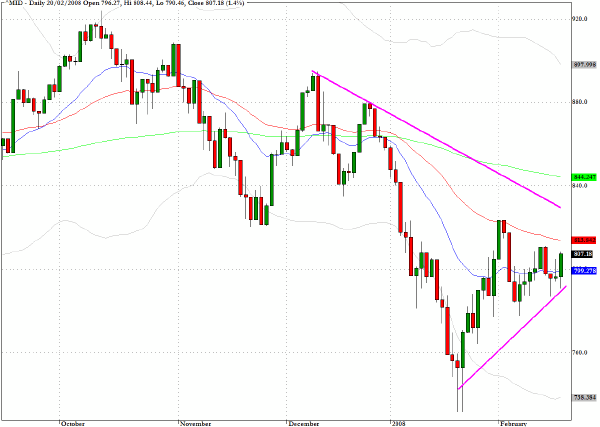
While most western European, Asian and North American indices appear to be dithering some emerging market indices are pushing towards all time highs. The Bovespa index in Brazil (^BVSP) looks poised to challenge the mid December historic high.
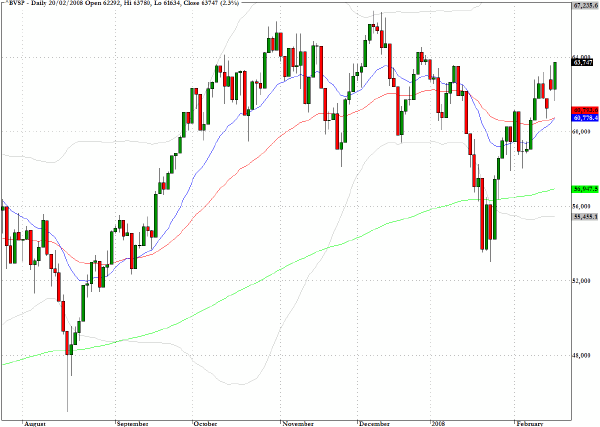
The chart for the Russell 2000 (^RUT) is also running out of room for further avoidance of the big decision about intermediate-term direction.
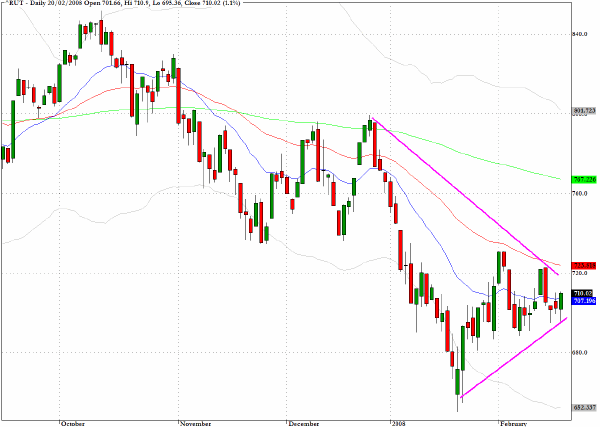
The daily chart for Applied Materials (AMAT) highlights the whipsaw/reversal behavior well. The slight uptick in volume on yesterday's reversal which also brought a close back above all three moving averages looks like a setup for higher prices.
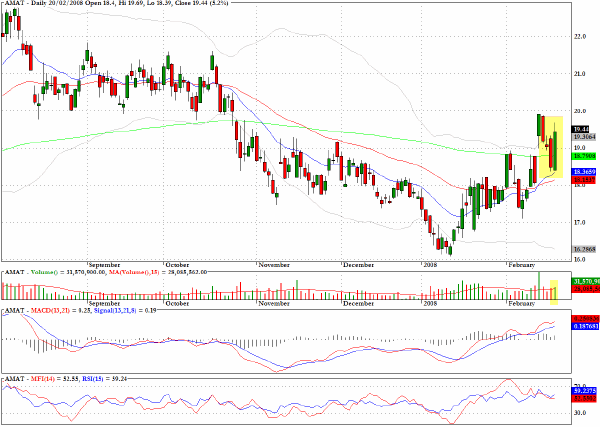
Brush Engineered Materials (BW) has pulled back to a level where sellers may strike again.
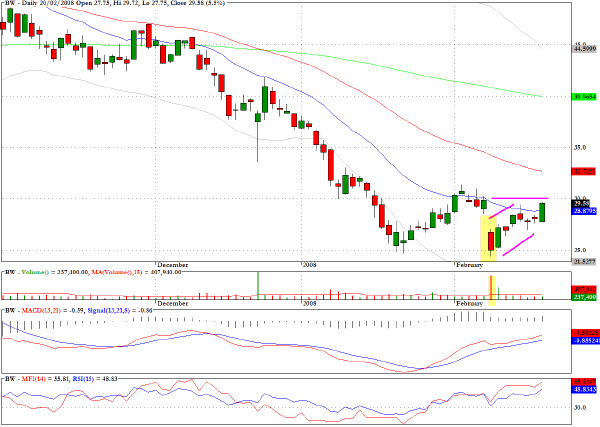
Recently I noted that the chart pattern for Garmin (GRMN) is unusually bearish with a staircase pattern of bear flags. The one that began in early February had a sting in the tail as the action yesterday included an upward opening gap but as the session wore on the bearish dynamics came back into play.
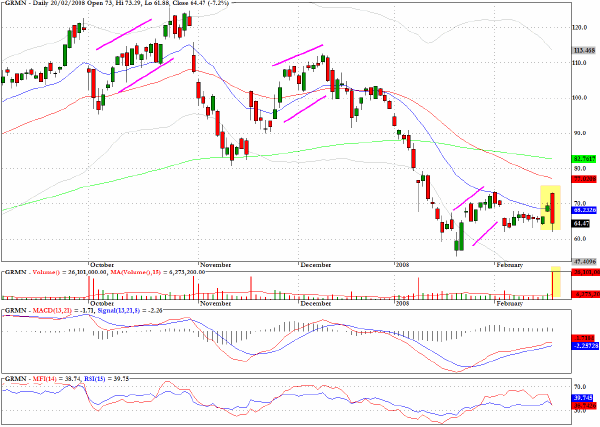
Price action in Amgen (AMGN) is becoming compressed as the volatility range is constricting. Along with the rest of the market a breakout is imminent and a long straddle options strategy looks appealing.
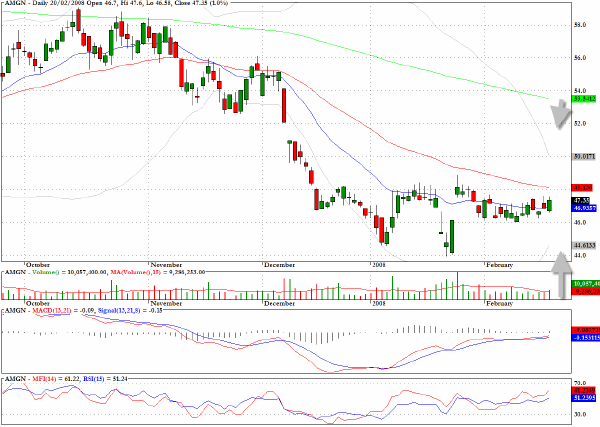
Clive Corcoran is the publisher of TradeWithForm.com, which provides daily analysis and commentary on the US stock market. He specializes in market neutral investing and and is currently working on a book about the benefits of trading with long/short strategies, which is scheduled for publication later this year.
Disclaimer
The purpose of this article is to offer you the chance to review the trading methodology, risk reduction strategies and portfolio construction techniques described at tradewithform.com. There is no guarantee that the trading strategies advocated will be profitable. Moreover, there is a risk that following these strategies will lead to loss of capital. Past results are no guarantee of future results. Trading stocks and CFD's can yield large rewards, but also has large potential risks. Trading with leverage can be especially risky. You should be fully aware of the risks of trading in the capital markets. You are strongly advised not to trade with capital.
|